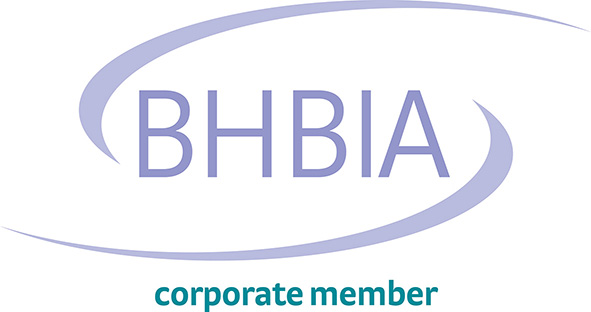Market Research Glossary
Market Research Glossary
There are currently 91 names in this directory beginning with the letter A.
A Posteriori
It is an approach where a theoretical framework is developed from the research (after it has been conducted).
A Priori
It is an approach where a theoretical framework is developed before the research is conducted.
A Priori Segmentation
A priori segmentation refers to a segmentation technique based on conventional assumptions rather than on market research.
A.C. Nielsen Retail Index
It provides consumer-oriented and media research market intelligence from various sources.
A/B Testing
It is a process of showing two variants of the same web page to different segments of website visitors at the same time and comparing which variant drives more conversions.
Absolute Error
Absolute Error is the amount of error in your measurements. It is the difference between the measured value and “true” value.
Accompanied Shopping
It is a form of observation study where an interviewer accompanies a respondent (with his or her agreement) as they go shopping.
Account Manager/Executive
An account executive is an employee who has the primary day-to-day responsibility for an ongoing business relationship with a client.
Achieved Communality
A term used in factor analysis that represents the proportion of variance in an original variable accounted for by all the extracted factors. Each original variable will have an achieved communality value in the factor analysis output.
ACORN
ACORN is a geo-demographic tool assisting business in understanding their target market. ACORN focuses on population location and other lifestyle variables. Individuals in rural locations have different purchasing behavior than those residing in bustling downtown neighborhoods. The information gathered by ACORN allows business to concentrate marketing strategies for specific geographic locations. This impacts marketing campaigns, where to open the next franchise, which store location to close and more.
Acquiescence Bias
Acquiescence bias, also known as agreement bias, is a category of response bias common to survey research in which respondents have a tendency to select a positive response option or indicate a positive connotation disproportionately more frequently.
Action Devices
Action Device also called as involvement device, as the name suggests elicits an action or response from the recipient.
Ad Concept Testing
The process of getting an idea evaluated by your target audience before it becomes available to the public. It includes anything from product concepts to ad campaigns.
Ad Hoc Research
It is research that is specifically designed to address a particular problem or issue. Ad hoc research is usually conducted when there is insufficient existing information. Projects are usually single pieces of research rather than part of a continuous programme.
Ad Positioning Statement Tests
The evaluation of a positioning statement measuring audience response.
Ad Recall
Ad recall is a campaign metric that measures how memorable an advertisement is to an audience.
Ad Tracking Research
Ad Tracking research refers to the concept of evaluating the in-market performance of advertising and the greater definition of 'marketing communications' and any brand touchpoints.
Adaptive Conjoint Analysis (ACA)
The strength of conjoint analysis is its ability to ask realistic questions that mimic the tradeoffs that respondents make in the real world. Respondents evaluate product alternatives (concepts) described by various attributes and indicate which products they prefer.
Adaptive Scripting
Adaptive scripting is a tailored list of questions. The respondent's response dictates which question to ask next.
Additive Causal Relationship
It is a type of causal relationship in which the effect of two variables on a third variable is additive (i.e. one variable does not counteract the effect of the other variable).
Address Coding Guide (CG)
The Address Coding Guide is a comprehensive listing of address ranges and streets solely within the corporate.
Advertising Research Foundation (ARF)
The Advertising Research Foundation (ARF) is the only organization that creates and curates objective, original research through education, events, and networking for advertising practitioners.
Affective Component
It is one of the three components of attitude that is concerned with individuals’ emotions or feelings towards an object or idea.
Affective Component of Attitudes
An emotion generated in response to a person, object, or event. The emotion or feeling toward a person or object is the affective component of attitudes.
Affiliate Marketing
Affiliate marketing is a type of performance-based marketing in which a business rewards one or more affiliates for each visitor or customer brought by the affiliate's own marketing efforts.
Affinity Marketing
Affinity marketing is a concept that consists of a partnership between a company (supplier) and an organization that gathers persons sharing the same interests to bring a greater consumer base to their service, product or opinion. This partnership is known as an affinity group.
After-Only with Control Group
There is no measurement taken from either group before the experimental variable is introduced and the control group is not subsequently subjected to the experimental variable.
Aggregate
It is a summary measure made by compounding two or more separate measures, e.g. national income and price index numbers.
Aided Awareness
It is the percentage of respondents who claim to have seen something (eg a brand or an advert) after having been shown some form of stimulus material.
Aided Recall/Awareness
Aided Recall is a market research technique in which the respondents are shown an advertisement and asked questions corresponding to it. Aided Recall is a technique of aided brand awareness. The respondents express their knowledge about a particular product when they are prompted.
Alert
It is a means of informing a data collection company of a study authorisation and it usually includes a start date, delivery of materials, quota, timings and cost etc. Alerts can be made by e-mail, telephone or fax etc.
Alert! Magazine – Second Quarter 2014
Any means (i.e., telephone, fax, mail) of informing a Data Collection Company of the study authorization to include the starting date, delivery of materials, quota, timing, cost, etc.
All Commodity Volume (ACV)
It is the base commonly used in reporting a product's retail distribution. If a product is distributed in only one out of every five stores, it is 20%. However, if the stores that carry the product are the very largest stores that account for 80% of sales, then the ACV is 80%.
Allowable Sampling Error
A sampling error occurs when the sample used in the study is not representative of the whole population. Sampling errors often occur, and thus, researchers always calculate a margin of error during final results as a statistical practice.
Alternative Hypothesis
It is a statement that suggests a difference or an effect is present (i.e. there is an alternative). The alternative hypothesis is adopted when the null hypothesis has been disproved.
American Standard Code of Information Interchange (ASCII)
The American Standard Code for Information Interchange (ASCII) is a standard table of seven-bit designations for digital representation of uppercase and lowercase Roman letters, numbers and special control characters in teletype, computer and word processor systems.
Analysis of Covariance (ANCOVA)
An analysis of variance procedure in which the effects of one or more metric-scaled extraneous variables (covariates) are removed from the dependent variable data before one conducts ANOVA.
Analysis of Variance (ANOVA)
It is a statistical technique for examining the differences among means for two or more populations.
Analyze (aka Analysis)
The review of information gained from the responses to questionnaires completed for a study or other data and to arrive at conclusions or to make decisions and recommendations on the subject being studied.
Answer Cards
It is a card, a piece of paper, or an electronic screen containing answer categories to a question, from which the respondent chooses the answer to the survey question. ... The primary purpose for using show cards is to reduce survey measurement error.
Anthropomorphic
Anthropomorphism is defined loosely as the attribution of human emotions to animals and inanimate objects.
Anthropomorphic or Brand Personality Research
A research technique in which participants describe a product, service or brand in terms of a human being with personality traits so that the participants' feelings about the object/brand can be determined. Also called Brand Personality Research. Based on the premise that brands can have personalities in much the same way as humans, Brand Personality describes brands in terms of human characteristics.
Applet
Applets typically are Java programs that can display interactive animation, execute immediate calculations, and provide more uses for a market research questionnaire.
Application Service Provider (ASP)
An application service provider (ASP) is defined as an enterprise that delivers application functionality and associated services across a network to multiple customers using a rental or usage-based transaction-pricing model.
Applied Research
Applied research is designed to answer specific questions aimed at solving practical problems. ... New knowledge acquired from applied research has specific commercial objectives in the form of products, procedures or services
Area of Dominant Influence (ADI)
An ADI or Area of Dominant Influence is the geographic area or market reached by a certain radio or television station. It is used by advertisers and rating companies to determine the potential audience of a station.
Area Samples
A method of sampling when no complete frame of reference is available. The total area under investigation is divided into small sub-areas which are sampled at random or by some restricted random process.
Arithmetic Mean
the Arithmetic Mean (AM) or called average is the ratio of all observations to the total number of observations.
Artificiality
It is a the degree to which experimental conditions do not reflect real-life conditions. A high degree of artificiality reduces external validity (ie it becomes difficult to project the experimental results to the population of interest).
Association Matrix
An association matrix shows how people and businesses are related. A filled circle means that there is a confirmed relationship between the two people.
Association Technique
It is a form of projective technique where participants are presented with some stimulus material and they are then asked to respond with the first thing that comes to their minds.
Asterisk Bills
A law preventing telemarketing or telephone interviewers calling the phone numbers of subscribers requesting not to be contacted.
Asynchronous Qualitative Research
In asynchronous qualitative methods, the researcher has more time to consider. participants' responses during the data collection process.
Asynchronous Research
Asynchronous research is an approach in which the respondent records their response on their own time - within a given time frame.
At-Home Testing
At-home testing involves placing a product in a respondent’s home and asking them to use it in the manner they normally would. Depending on scale it can either be classified as a qualitative or quantitative technique – although, as a quantitative tool, samples tend to be in the hundreds not thousands.
Atomistic Test
It is a test that aims to assess participants’ reactions to individual elements of a product or concept (in contrast to a holistic test that looks at a product or concept as a whole).
Attempt
It is when someone tries to contact a potential research participant, whether or not anyone is actually reached and whether or not the contact results in the potential respondent participating in some research.
Attitude
It is an individual’s learned predisposition to behave in a consistent manner towards an object or idea. There are three components of attitude: (i) a cognitive component - knowledge and beliefs (ii) an affective component - feelings and emotions (iii) a conative component - behaviour (usually measured in terms of likelihood to buy).
Attitude Research
It is a research study to obtain information on how people feel about certain products, ideas or companies.
Attitude Scaling
It is the development of measurement criteria used to measure individuals’ attitudes.
Attitude Survey
It is a research study to obtain information on how people feel about certain products, ideas or companies.
Attitude, Awareness, & Usage (AAU) Study
It allows client companies to gain a greater understanding of their market presence, and their strength within the market.
Attitudinal Scaling
Scaling Techniques for Measuring Data Gathered from Respondents. The term scaling is applied to the attempts to measure the attitude objectively.
Attribute
It is a word or phrase to describe a qualitative characteristic of an idea or object under consideration, e.g. gender is a attribute but age is a variable.
Attribute Analysis
It is a technique that is designed to develop lists of characteristics, uses or benefits relevant to a particular product category
Audimeter
A devise attached to a television (or, originally, a radio) that records and transmits whether or not the television is turned on, and how long it broadcasts a particular channel.
Audio Computer-Aided Self-Administered Interviewing (ACASI)
Audio-Computer Assisted Self- Interview (ACASI) is a method of data collection in which participants listen to pre-recorded questions through headphones and respond to questions by selecting their answers on a touch screen or keypad.
Audio SAQ
The respondent conducts a self-administered survey by listening to the interview questions over headphones.
Audit
Audit has two definitions in the context of Marketing Research. A Store Audit is a method of determining the number of product units that have been sold by counting physical units in stores and combining that with a knowledge of the number ordered and stock levels. A second definition is a Project Audit that involves visiting a project site to ensure all project specifications are being met and agreed procedures are being followed
Augment
This is the process of increasing the amount of research interviews for a particular subgroup within the population.
Autocorrelation
Autocorrelation represents the degree of similarity between a given time series and a lagged version of itself over successive time intervals. Autocorrelation measures the relationship between a variable's current value and its past values.
Automatic Interaction Detector (AID)
Automatic Interaction Detector analysis (AID analysis) statistical technique for multivariate analysis. It can be used to determine the characteristics that differentiate buyers from nonbuyers.
Average
It is a general term that is used to represent or summarise the relevant features of a set of values. The arithmetic mean is often used as a measure of average, but the median and the mode can also be used to summarise a set of values.



